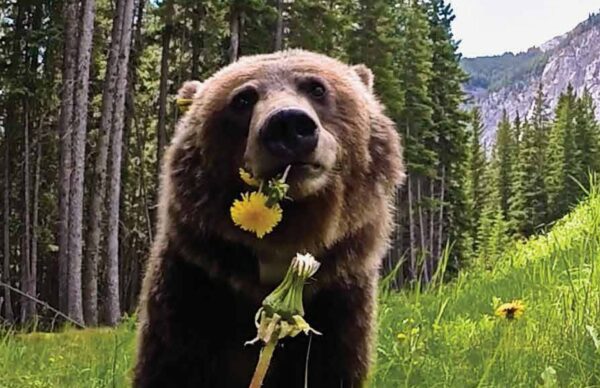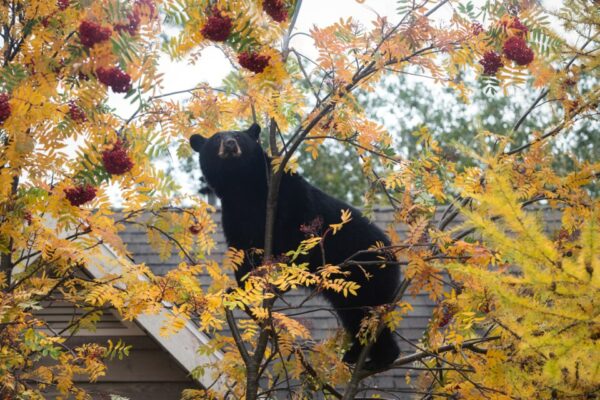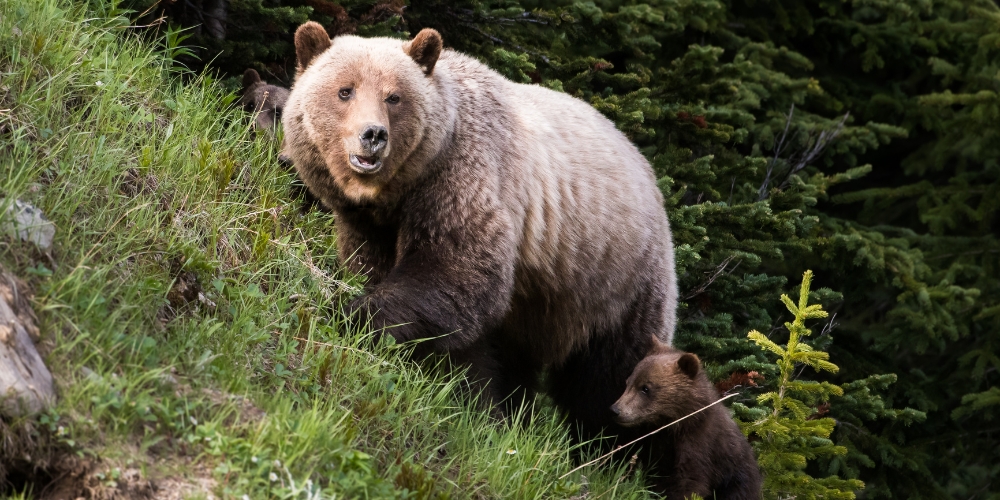Last week, a Canmore resident got quite the scare after encountering a bear up close.
While hiking, the newly arrived Canmorite suddenly found themselves within five metres of the animal. The new startled resident used bear spray to scare it away.
Thankfully, the bear retreated into the woods and away from the hiker.
But how did the bear get so close to begin with?
According to Victoria Person, a director of communication for Alberta Forestry and Parks, the hiker was wearing earbuds, which may have impacted her ability to hear the bear.


Newbie or not, educating ourselves on the local wildlife is essential to avoid such encounters.
“Situational awareness is key to safety while enjoying the outdoors during bear season. Always have full senses of sight and sound available while enjoying the outdoors,” Person told the Rocky Mountain Outlook.
The near miss took place at the Legacy Trail at the Canmore Nordic Centre, which has since been closed for an investigation.
A bear warning is also in place for nearby Larch Island, where a bear was spotted feeding on a carcass. Nick de Ruyter, director for Bow Valley WildSmart, says many bears are still active in and around Canmore.
As bears prepare to hibernate, increased activity is a given.
But people are at least partially to blame.
Bear safety needs to be practiced year-round, not just before hibernation. Bear safety must also be practiced at home, not just outdoors.
That means keeping our homes free of bear attractants. This includes bird feeders, berry bushes, fruit trees, garbage, and gardens.
Multiple bear sightings in Discovery Ridge in southwest Calgary have prompted the city to enact new bylaw amendments to deter bears. The amendments require residents to put their waste, recycling, and compost bins out for collection no earlier than 5 AM.
Discovery Ridge is currently designated as ‘wildlife affected,’ meaning residents must store their waste in a garage, shed, or other secure enclosure that bears can’t access.
But securing our waste is only part of the solution. According to Julie Cusson, a Discovery Ridge resident, the issue of other attractants remains.
While towns like Canmore and Banff are taking action to remove or ban specific attractants like fruit trees, Calgary hasn’t followed suit. Better waste management is a step in the right direction, but it’s not effective on its own.
“I think the bigger problem is here is that there is a cohort of bears out here that has been habituated, and whether we put the garbage away or not, they’re staying here. I think the only solution is to trap them and then move them out,” Darrin Hopkins, another Discovery Ridge resident, told CBC News.
Habituation increases the likelihood of human-bear conflicts, putting both at risk. When an animal becomes habituated, it loses its natural fear of humans and will seek out food in places it usually wouldn’t. This includes populated neighbourhoods with abundant attractants like garbage and fruit trees.


Bears have great memories. Once they recognize a neighbourhood as a food source, they will likely return year after year. Preventative measures like hazing can reinstill fear in bears, but this process takes weeks and isn’t guaranteed. Other preventative measures include relocation.
A black bear in Canmore was recently relocated twice on the same day. The bear showed clear signs of habitation and was relocated to prevent the animal from becoming further habituated. But the fate of habituated bears isn’t always as forgiving.
One bear was killed after eating fruit in the Three Sister Drive and Rundle Plant area. That’s the likely reality for most bears that become habituated. Canmore’s most recent bear was relocated because it was a first-time offender. This is why it is important to practice bear safety at all times.
“We need some more support from the public. We’re always fighting food sources that we, as people, provide. We’re not in the business to go out and kill animals. Sometimes, we have to make the hard decisions,” said Francesco Marchet, a district fish and wildlife officer for Canmore and Cochrane.
Canmore has invested $10,000 of its 2023 budget into removing almost 100 fruit trees through the town’s fruit tree removal incentive program. In 2018, there were around 2,500 trees town-wide.
Letting fruit berries accumulate on trees, pushes, or the ground is now illegal. Planting fruit-bearing trees is also illegal, with fines ranging from $250 to $10,000.
Bears are an essential part of our identity, symbolizing strength, courage, and familiarity. We have the privilege of co-existing with these beautiful animals. We need to protect our bears by practicing proper bear safety.
And a big part of bear safety is being aware of your surroundings. So you don’t accidentally put a bear in a situation where it feels it needs to defend itself.






